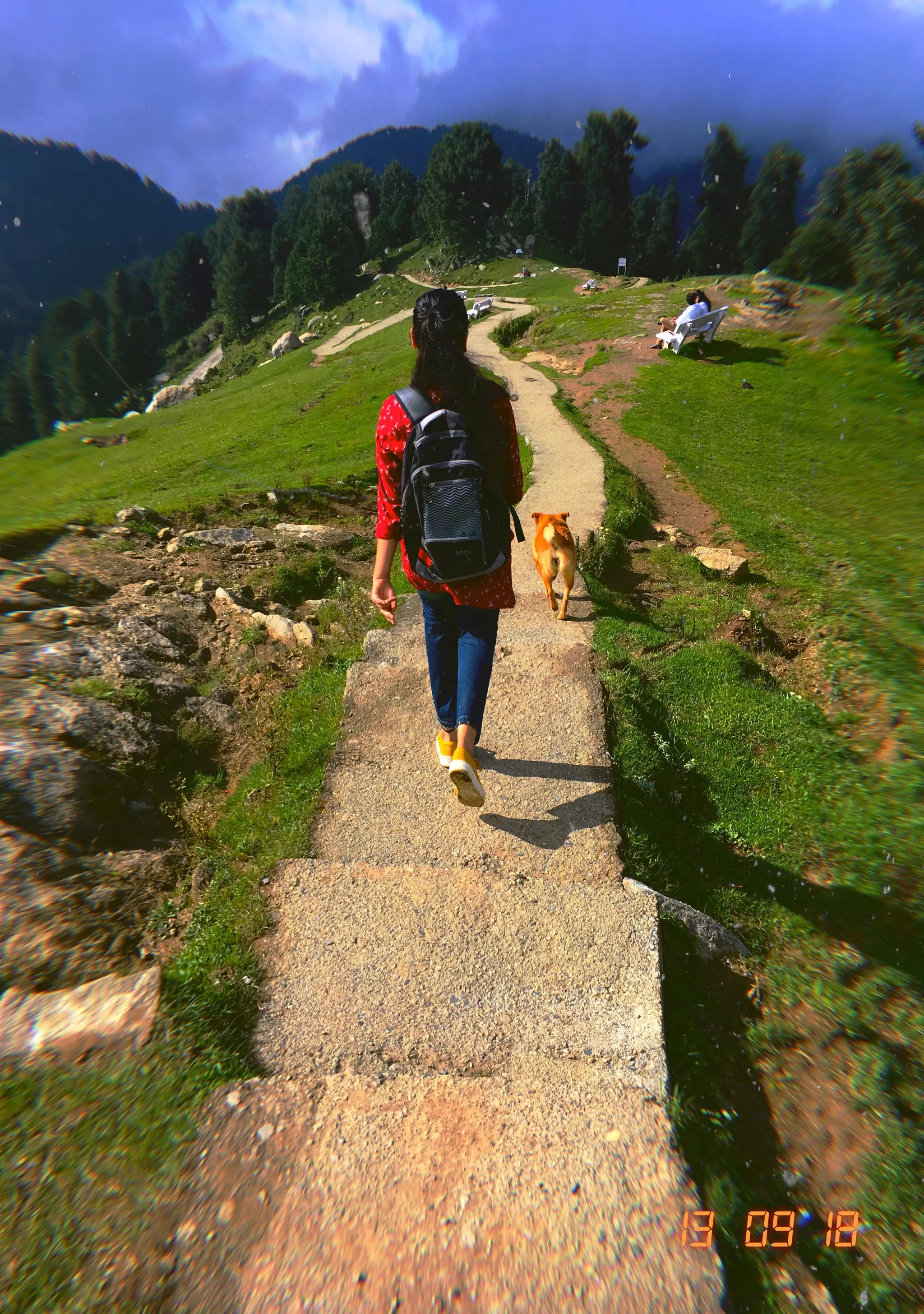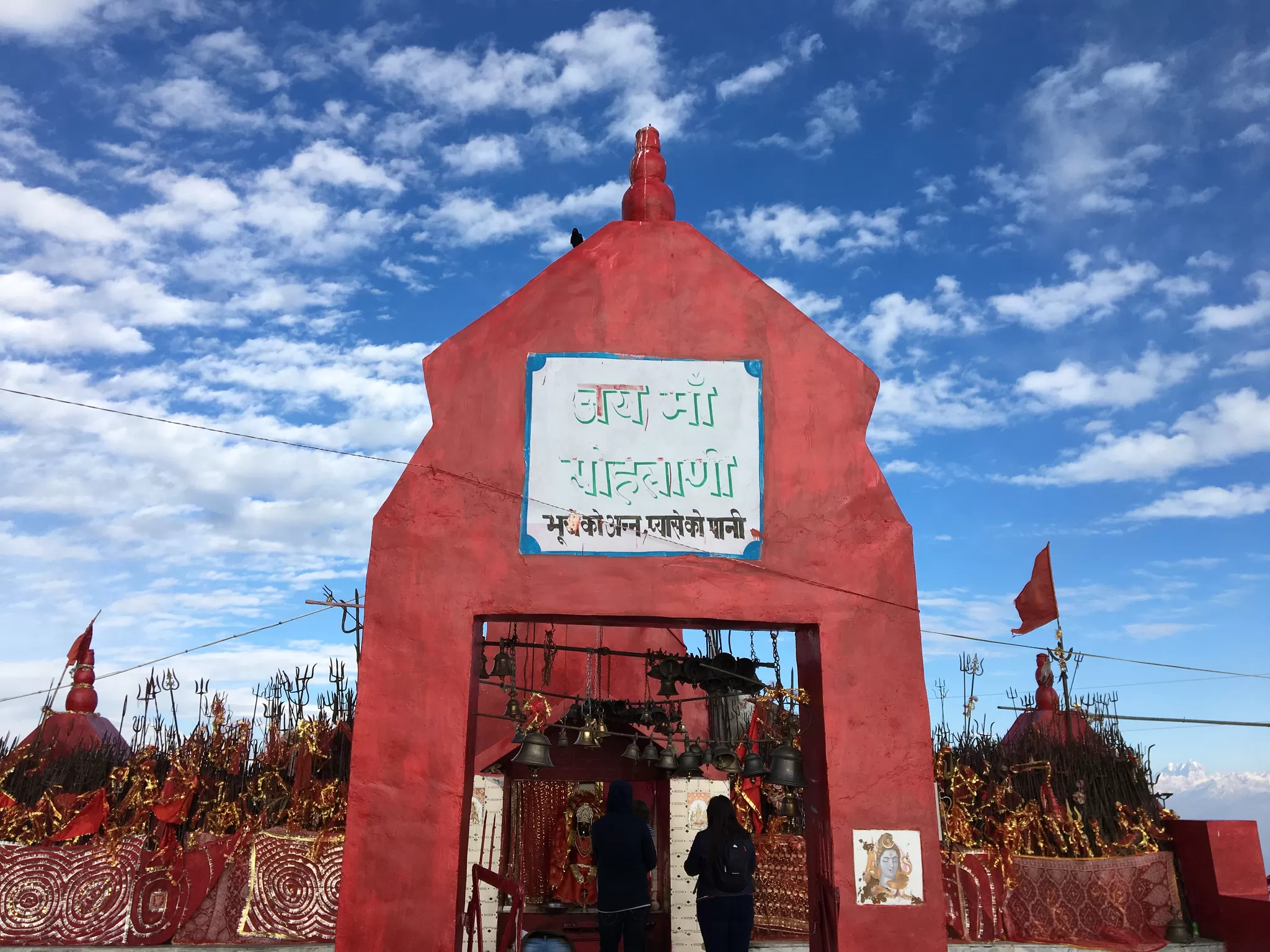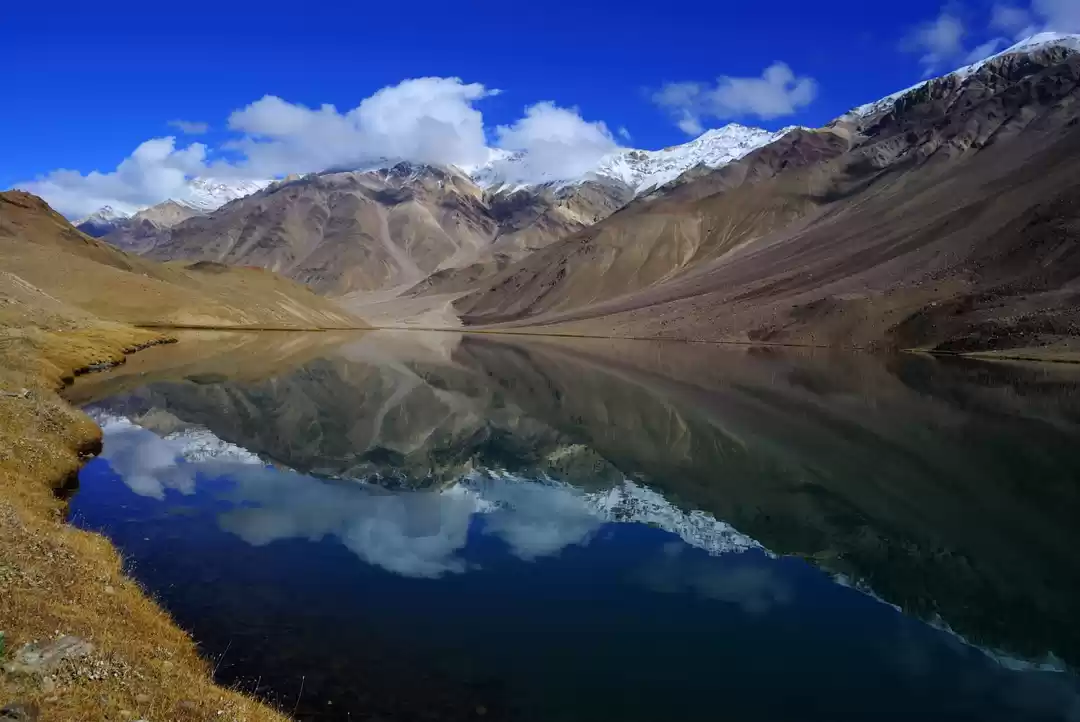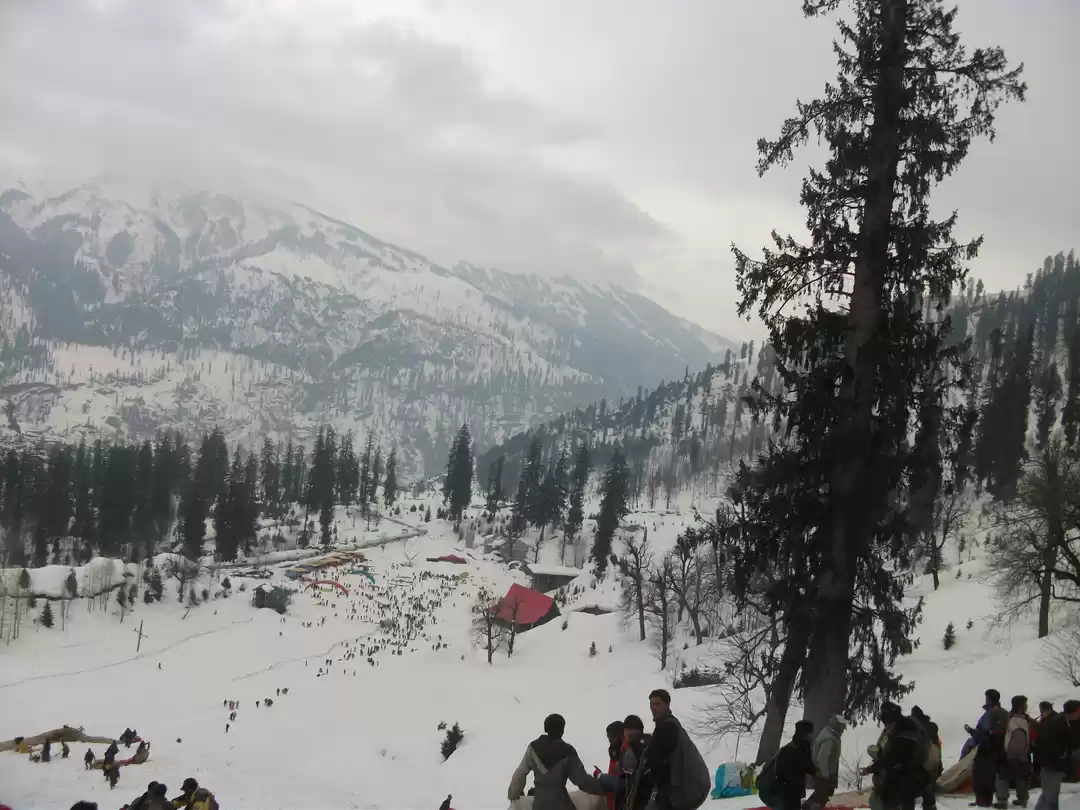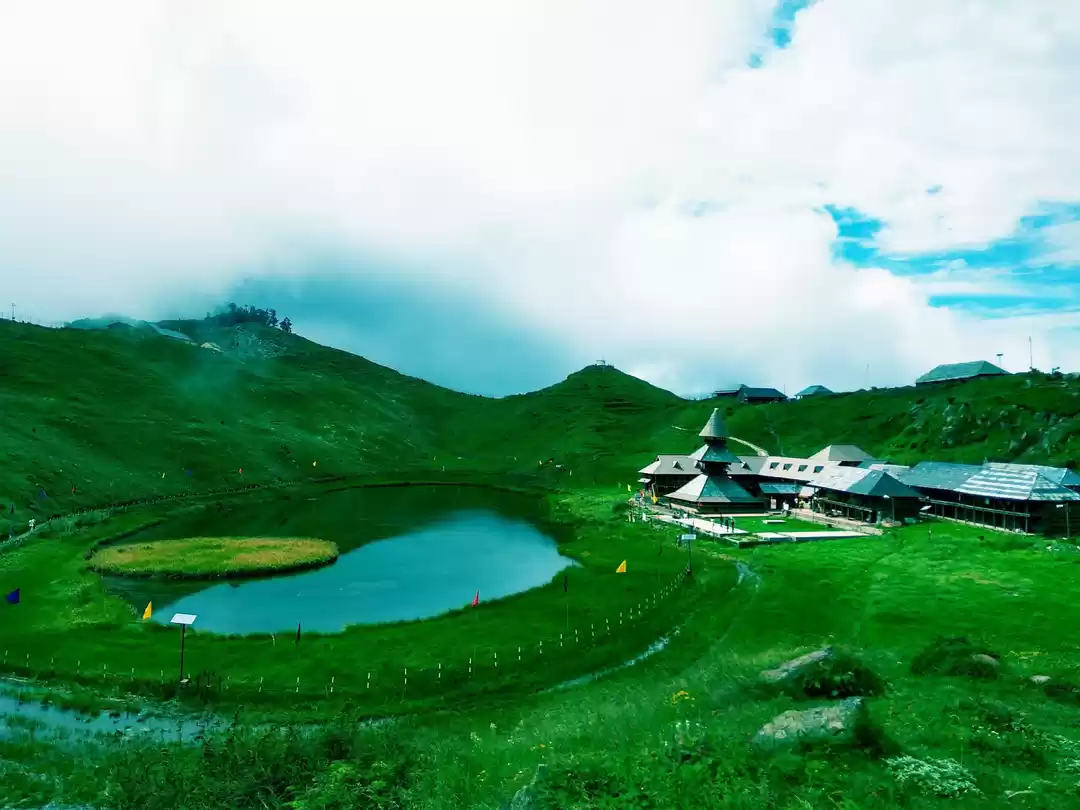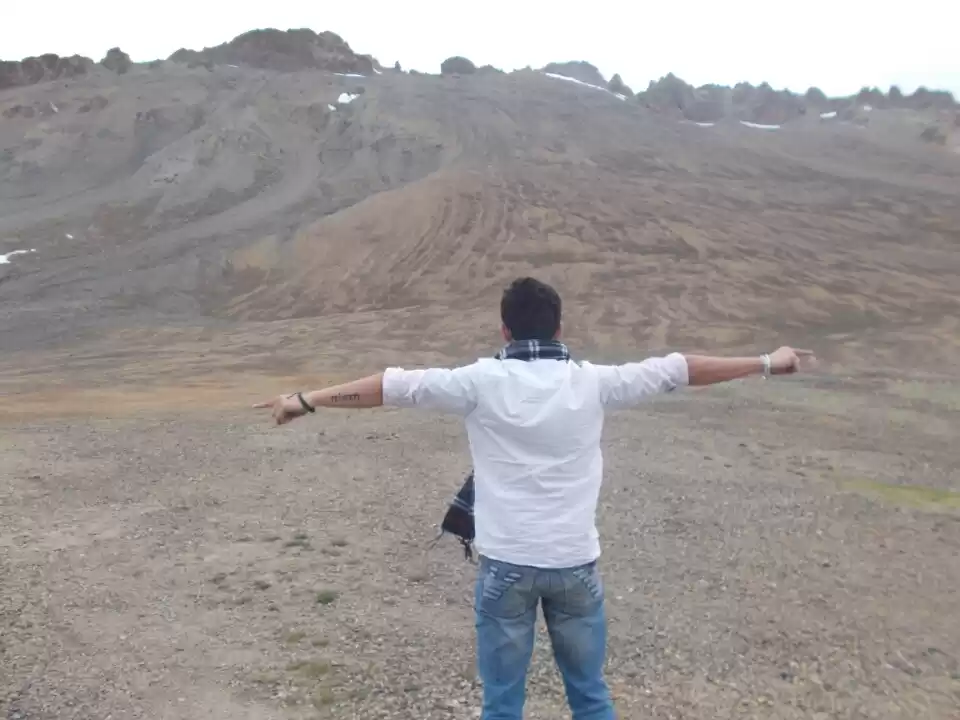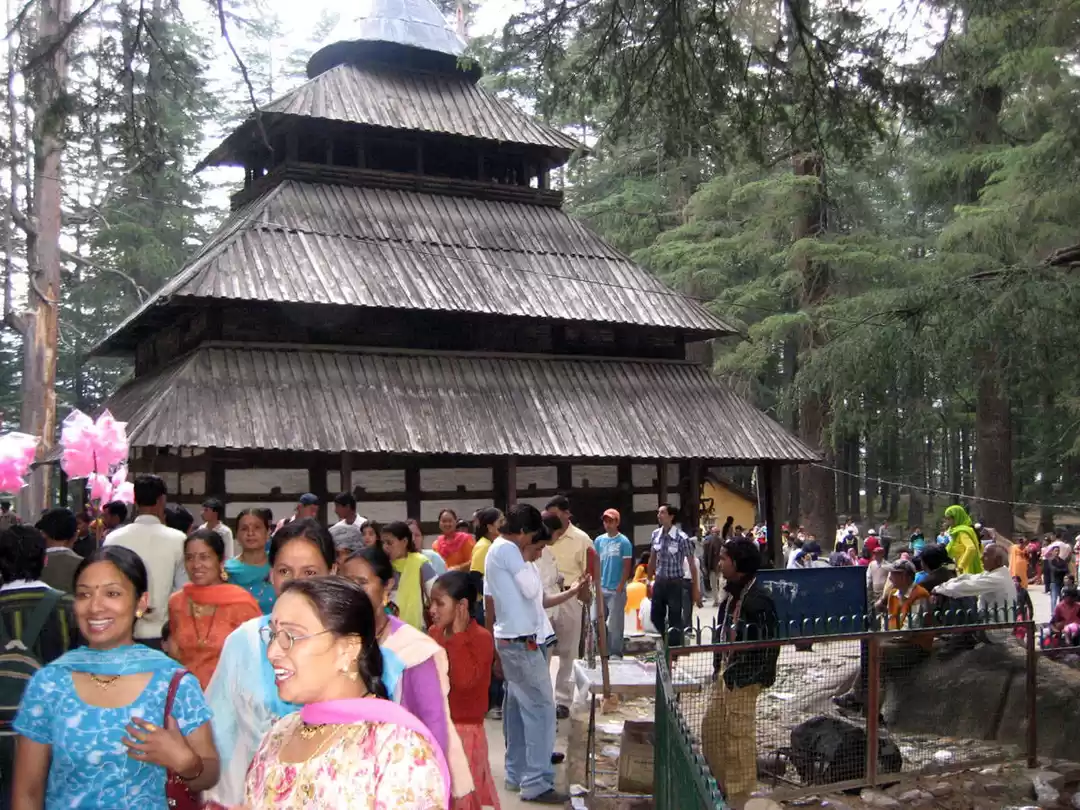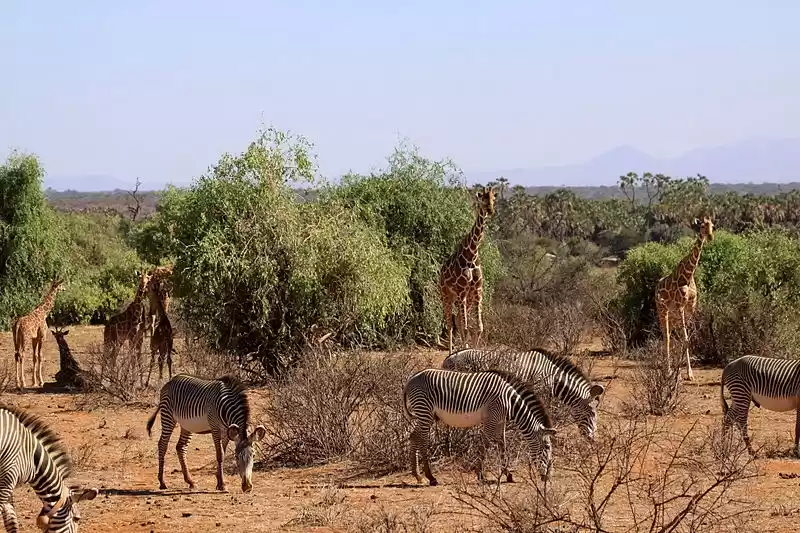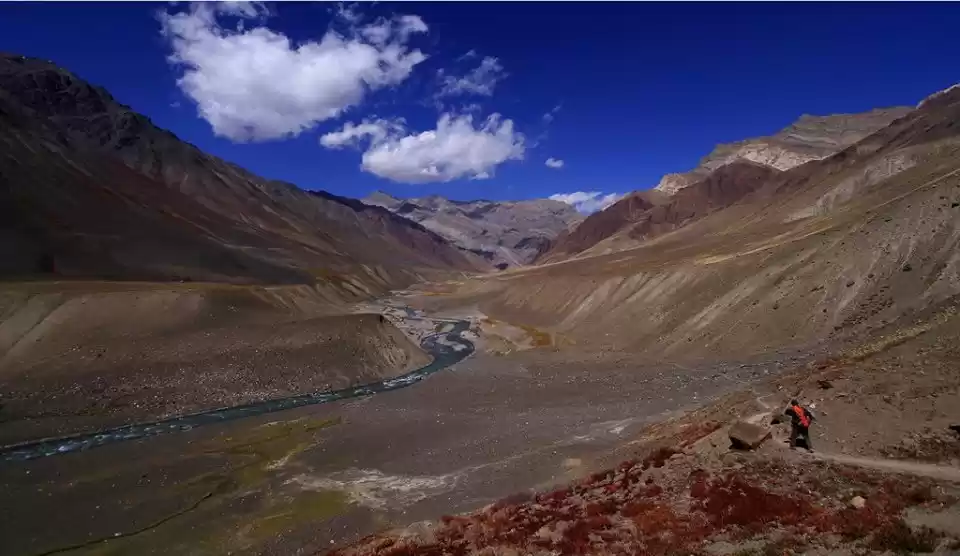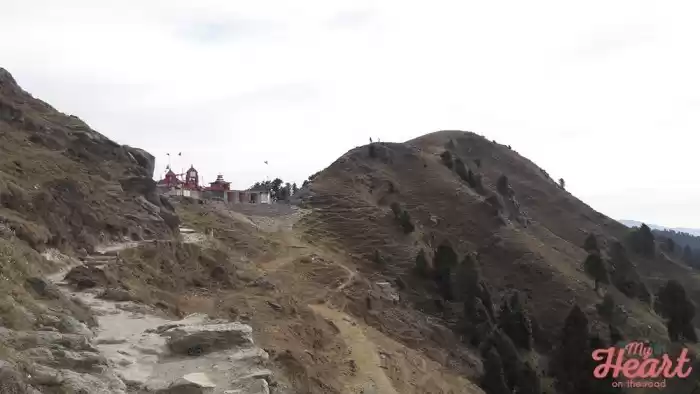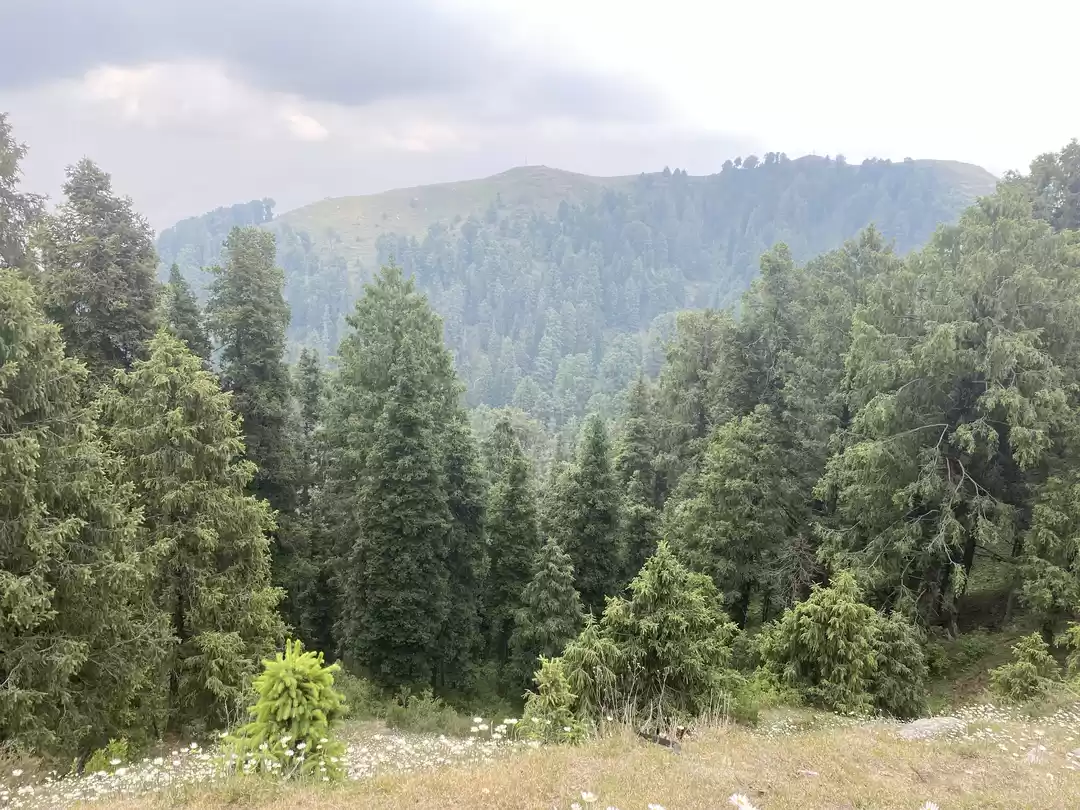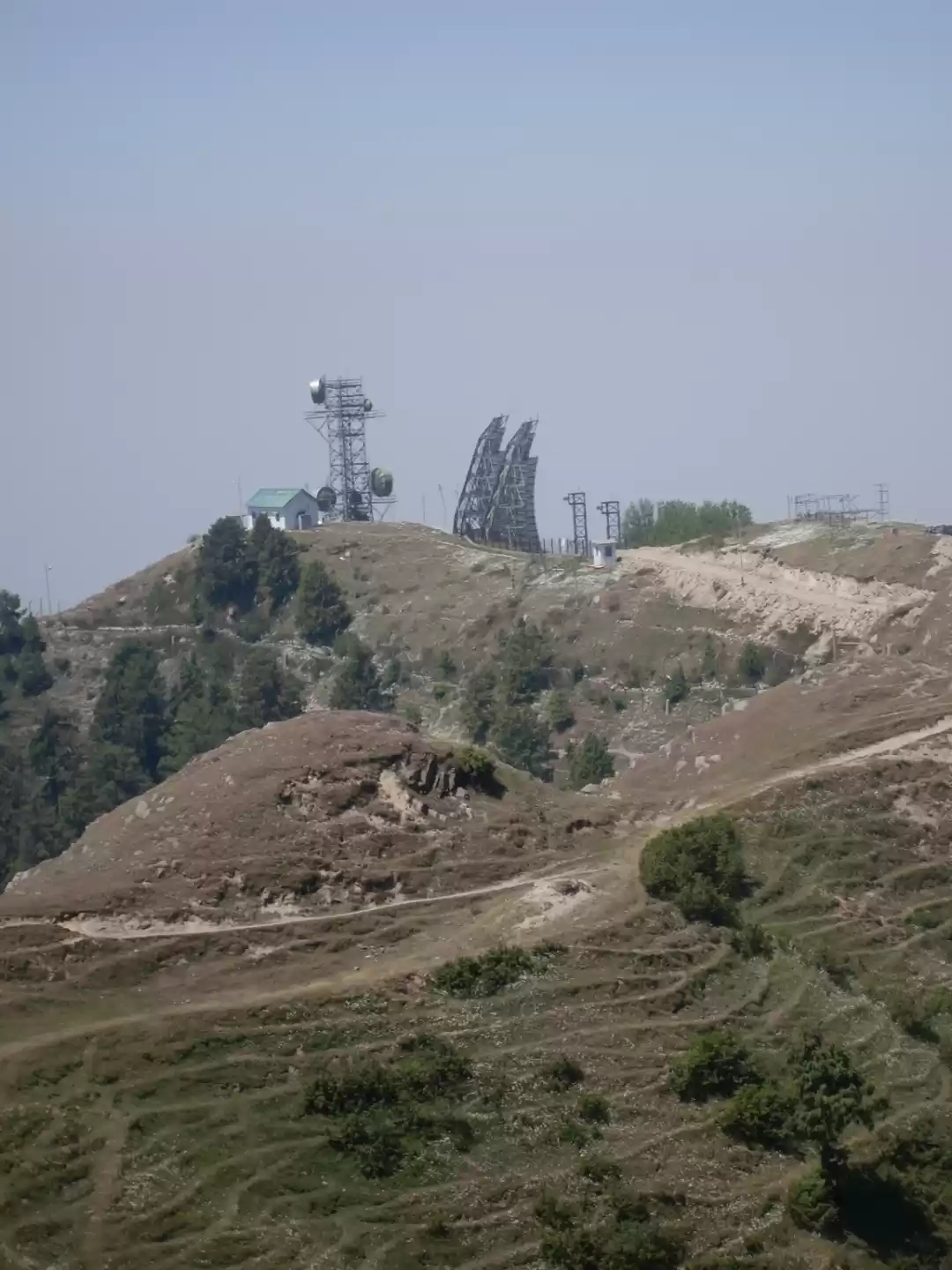If you are looking for a place that offers stunning views, serene atmosphere, and rich history, then you should not miss Dainkund Peak in your Dalhousie itinerary. Dainkund Peak is the highest and most beautiful point in Dalhousie, where you can enjoy a 360-degree panorama of the snow-capped mountains, lush green valleys, and sparkling lakes. Dainkund Peak is also a place of spiritual and cultural significance, as it is home to the ancient Pholani Devi Temple and the strategic Air Force Base. Dainkund Peak is a must-visit destination for nature lovers, adventure seekers, and peace seekers alike.
In this article, we will tell you everything you need to know about Dainkund Peak, including how to reach, when to visit, what to see, and what to do. We will also give you some tips and recommendations to make your trip more enjoyable and memorable. Whether you are travelling solo, with your partner, with your family, or with your friends, you will find something to suit your taste and budget at Dainkund Peak.
How to Reach Dainkund Peak
Dainkund Peak is located about 10 km from the main town of Dalhousie, in the district of Chamba, Himachal Pradesh. You can reach Dainkund Peak by road, by air, or by rail.

By road:
The most convenient and popular way to reach Dainkund Peak is by road. You can hire a taxi or a bike from Dalhousie and drive along the scenic route that passes through the pine and deodar forests. The road is well-maintained and safe, but it can be narrow and steep at some places. The drive takes about 30 minutes from Dalhousie to Dainkund Peak. You can also take a bus from Dalhousie to Lakkar Mandi, which is the nearest bus stop to Dainkund Peak, and then walk for about 3 km to reach the peak.
By air:
The nearest airport to Dainkund Peak is the Gaggal Airport in Kangra, which is about 130 km away. You can take a flight from Delhi, Chandigarh, or other major cities to Gaggal Airport, and then hire a taxi or a bus to reach Dalhousie. From Dalhousie, you can follow the same road route as mentioned above to reach Dainkund Peak.
By rail:
The nearest railway station to Dainkund Peak is the Pathankot Railway Station, which is about 80 km away. You can take a train from Delhi, Amritsar, or other major cities to Pathankot Railway Station, and then hire a taxi or a bus to reach Dalhousie. From Dalhousie, you can follow the same road route as mentioned above to reach Dainkund Peak.
The Best Time to Visit Dainkund Peak
Dainkund Peak is a year-round destination, as it offers different charms and attractions in different seasons. However, the best time to visit Dainkund Peak depends on your preference and purpose of visit.

Summer (April to June): Summer is the ideal time to visit Dainkund Peak if you want to escape the heat and enjoy the pleasant weather. The temperature ranges from 15°C to 30°C, and the sky is clear and blue. You can witness the blooming of various flowers, such as rhododendrons, daisies, and buttercups, that add colour and fragrance to the landscape. You can also indulge in some adventure activities, such as trekking, camping, and paragliding, that are available during this season. Summer is also the peak season for tourism, so you can expect a lot of crowd and high prices at Dainkund Peak.
Monsoon (July to September): Monsoon is the least preferred time to visit Dainkund Peak, as it brings heavy rainfall and landslides that can disrupt your travel plans. The temperature ranges from 10°C to 25°C, and the sky is cloudy and foggy. You can witness the greenery and freshness of the valley, but you may also face some difficulties in reaching and exploring Dainkund Peak. You can also enjoy some discounts and deals, as monsoon is the off-season for tourism at Dainkund Peak.
Winter (October to March): Winter is the best time to visit Dainkund Peak if you want to experience the snow and the cold. The temperature ranges from -5°C to 10°C, and the sky is clear and sunny. You can witness the snowfall and the snow-covered peaks, valleys, and lakes, that create a magical and mesmerizing view. You can also indulge in some winter activities, such as skiing, snowboarding, and snowshoeing, that are available during this season. Winter is also the festive season, as you can celebrate Diwali, Christmas, and New Year at Dainkund Peak.
The Pholani Devi Temple: A Sacred and Serene Spot
One of the main attractions of Dainkund Peak is the Pholani Devi Temple, which is dedicated to the local goddess of the region. The temple is situated at the top of the peak, and it is believed to be more than 500 years old. The temple is made of wood and stone, and it has a simple and elegant design. The temple has a unique feature, as it does not have any idol or statue of the goddess, but only a trident that represents her power and presence.

The temple is surrounded by a peaceful and calm atmosphere, as you can hear the musical sound of the breeze and the bells that adorn the temple. The temple is also a place of faith and devotion, as you can see the offerings and prayers of the devotees who visit the temple. The temple is open from 6 am to 6 pm, and there is no entry fee or dress code for the temple. However, you should respect the sanctity and cleanliness of the temple, and avoid any kind of disturbance or noise.
The Pholani Devi Temple is not only a religious site, but also a historical and cultural site, as it has a legend associated with it. According to the legend, Dainkund Peak was once the abode of witches, who used to torment the villagers with their evil deeds. The villagers prayed to the goddess for help, and she came to their rescue. She killed the witches and freed the peak from their curse. Since then, the peak is named after her, as Dainkund means the house of the goddess.
The Pholani Devi Temple is a must-visit place for anyone who wants to experience the divine and serene vibes of Dainkund Peak. You can also enjoy the panoramic view of the valley and the mountains from the temple, and feel the bliss and tranquility of nature.
The Air Force Base: A Strategic and Fascinating Place
Another attraction of Dainkund Peak is the Air Force Base, which is one of the highest and most important air bases in India. The Air Force Base is located at the end of the trekking trail from the Pholani Devi Temple, and it is guarded by the Indian Air Force personnel. The Air Force Base is a place of pride and patriotism, as it serves as a defence and surveillance facility for the country.

The Air Force Base is also a place of curiosity and wonder, as it offers a glimpse of the advanced and sophisticated technology and equipment used by the Air Force. You can see the radar systems, the communication towers, and the fighter jets that are stationed at the base. You can also hear the roaring sound of the engines and the propellers that create a thrilling and exhilarating effect.
The Air Force Base is open to the public, but you need to obtain a permission and a pass from the Air Force authorities before entering the base. You also need to follow the security and safety rules and regulations of the base, and avoid any kind of photography or videography inside the base. The Air Force Base is open from 9 am to 5 pm, and there is no entry fee for the base. However, you should respect the privacy and dignity of the Air Force personnel, and avoid any kind of disturbance or interference.
The Air Force Base is a must-visit place for anyone who wants to experience the glory and honour of the Indian Air Force. You can also enjoy the spectacular view of the valley and the mountains from the base, and feel the adrenaline and excitement of the Air Force.
The Musical Sound of the Breeze: A Unique and Magical Experience
One of the most fascinating and mysterious aspects of Dainkund Peak is the musical sound of the breeze that can be heard at certain places along the trekking trail. The sound is created by the gentle flow of air through the gaps and holes in the trees and rocks. The sound varies in pitch and intensity depending on the direction and speed of the wind. The sound is so melodious and soothing that it feels like nature is playing a symphony for the visitors.

The musical sound of the breeze is a rare and magical phenomenon that can only be experienced at Dainkund Peak. It adds a touch of charm and mystery to the serene surroundings and creates a feeling of awe and wonder. The musical sound of the breeze is also a source of inspiration and creativity for many artists, musicians, and poets who visit Dainkund Peak. Some of them even try to capture and reproduce the sound in their works.
The musical sound of the breeze is a must-experience feature for anyone who wants to enjoy the harmony and beauty of nature. You can also try to find the best spots and times to hear the musical sound and discover its secrets and meanings.
The Panoramic View of the Valley: A Breathtaking and Spectacular Sight
The ultimate reward of visiting Dainkund Peak is the panoramic view of the valley that awaits you at the summit. The view is so breathtaking and spectacular that it will leave you speechless and spellbound. You can see the entire Khajjiar Valley, also known as the Mini Switzerland of India, with its green meadows, dense forests, and crystal-clear lake. You can also see the majestic Pir Panjal Range, the Dhauladhar Range, and the Himalayan Range, with their snow-covered peaks and glaciers. The view is especially stunning during sunrise and sunset, when the sky changes its colours and creates a magical effect.

The panoramic view of the valley is a must-see sight for anyone who wants to witness the beauty and grandeur of nature. You can also capture the view in your camera and create memories that will last a lifetime. You can also enjoy a picnic or a bonfire at the peak, and savour the view with your loved ones. The panoramic view of the valley is a sight that you will never forget and always cherish.
Other Places to Visit in Dalhousie
Dainkund Peak is not the only attraction in Dalhousie, as the hill station offers many other places to visit and explore. Here are some of the other places that you can check out while you are in Dalhousie:
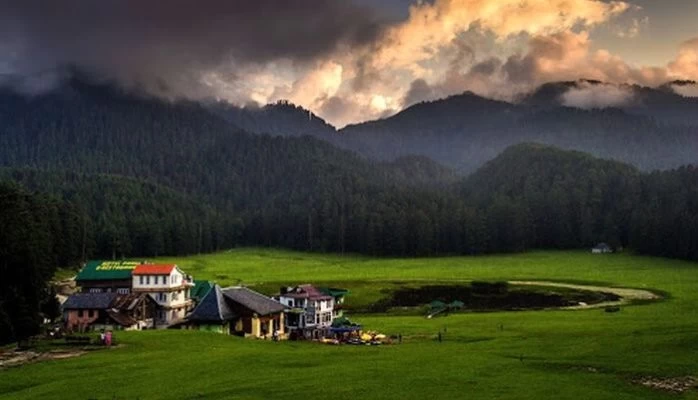
Khajjiar:
Known as the Mini Switzerland of India, Khajjiar is a scenic hill station located approximately 20 kilometres from Dainkund Peak. The place is famous for its lush green meadows, dense forests, and a picturesque lake. Visitors can enjoy horse riding, paragliding, zorbing, and exploring the Khajji Nag Temple.

Kalatop Wildlife Sanctuary:
Situated around 13 kilometres from Dainkund Peak, Kalatop Wildlife Sanctuary is a haven for nature lovers and wildlife enthusiasts. The sanctuary is home to various species of animals, birds, and plants, such as leopards, bears, deer, pheasants, and rhododendrons. Visitors can enjoy trekking, camping, and birdwatching at the sanctuary.

Ganji Pahari:
Located about 3 kilometres from Dainkund Peak, Ganji Pahari is a bald hill that offers a panoramic view of the surrounding hills and valleys. The hill is named so because it has no vegetation or trees on its top. Visitors can enjoy hiking, cycling, and photography at the hill.

Panchpula:
Located about 4 kilometres from Dainkund Peak, Panchpula is a scenic spot where five streams converge to form a waterfall. The place is also famous for its monuments and memorials, such as the Samadhi of Sardar Ajit Singh, the uncle of Bhagat Singh. Visitors can enjoy boating, zorbing, and paragliding at Panchpula.

St. John’s Church:
Located about 2 kilometres from Dainkund Peak, St. John’s Church is the oldest church in Dalhousie, built in 1863. The church is a fine example of Victorian architecture, with stained glass windows, wooden pews, and a Gothic spire. The church is also a place of historical and cultural significance, as it has a library that contains rare books and manuscripts.
Dainkund Peak is a place that offers a perfect blend of nature, culture, and adventure. It is a place that will fill your senses with awe and wonder, and your heart with joy and peace. It is a place that will make you fall in love with Dalhousie and the Himalayas. If you are planning to visit Dalhousie, make sure to include Dainkund Peak in your itinerary, and experience the magic and beauty of this hidden gem.
We hope this article has given you all the information and inspiration you need to visit Dainkund Peak. If you have any questions or feedback, please let us know in the comments below. Thank you for reading and happy travelling!







